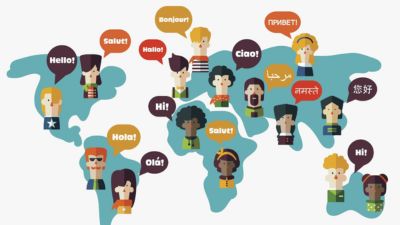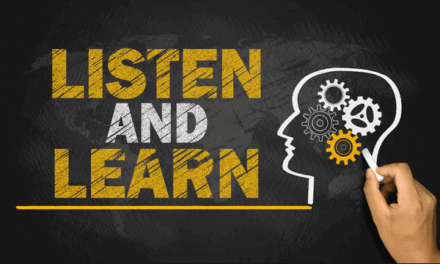How Language Learning Develops Cross-Cultural Competency

In today’s diverse, interconnected world, being culturally aware and sensitive is more important than ever. Learning a foreign language pushes us to recognize our own cultural biases and develop a more global, inclusive perspective.
Here are some of the key ways language learning can shape cultural understanding and competency:
Gaining Meaningful Insights into Cultural Frameworks
Immersing yourself in a new language provides eye-opening insights into different ways of thinking, behaving, communicating and perceiving the world.
Beyond vocabulary or grammar structures, language and culture are deeply intertwined.
Language as a Mirror of Societal Values
The words, idioms and linguistic structures of a language reflect cultural priorities and concerns.
Paying attention to these patterns provides insights into a society’s values:
- German has many specialized philosophical words like Weltschmerz (world-weariness) and Lebensangst (existential anxiety), reflecting how German culture encourages rumination and introspection.
- The countless Inuit words describing ice, snow, and cold weather underscores how elemental the climate is to sustaining life in the Arctic.
- Italian has a wide culinary vocabulary, with specific words for different pastas, wines, cheeses and cooking methods. This mirrors Italy’s cultural passion for food quality and conviviality.
Understanding how language encodes cultural DNA allows us to appreciate societal nuances.
Idioms as Cultural Capsules
Idioms are whimsical phrases unique to a language that often don’t translate literally. Grasping the imagery in idioms requires understanding the cultural stories and histories behind them.
For example, the English phrase “raining cats and dogs” makes no sense unless you know it conjures up a comical image of animals falling from the sky to describe heavy rain.
Or “being on cloud nine” captures an American cultural metaphor of clouds representing dreams and aspirations.
Analyzing idioms provides insightful peeks into cultural mythology and imagination.
Structural Differences Highlight Contrasting Thought Patterns
The grammatical categories and syntax of a language shapes how speakers order their thoughts. Studying these patterns reveals contrasts in cultural thinking:
- Chinese languages rely heavily on measure words or counters when quantifying nouns, reflecting how Chinese culture values quantitative, analytic thinking versus the more verbal English approach.
- The Romance languages like Spanish and French assign masculine or feminine genders to nouns. This implies speakers anthropomorphize objects as having inherent masculine and feminine traits and essences.
- Korean sentence structure omits naming the subject explicitly. This conveys a collectivist sense of shared context versus English’s explicit subject-verb formulas that spotlight individual actors.
Noticing quirks of language structure provides perspective on how cultures think and organize ideas differently.
Navigating the Labyrinth of Cultural Customs and Norms
Mastering a language requires learning the associated manners, etiquette rules, and social norms. Without this knowledge, we risk causing discomfort or offense.
Key areas where cultural conventions matter include:
Greetings Reflect Underlying Values
Who to greet, when, and how varies enormously cross-culturally based on factors like social status, age, and interpersonal context.
- Japanese bowing rituals reflect hierarchy while cheek kisses between friends in France signal warmth and intimacy.
- Use of honorific titles (e.g. Don/Doña) in Spanish-speaking cultures shows respect for elders and authority.
- Firm handshakes are the norm among English speakers, conveying confidence and equal status during greetings.
How cultures greet offers insights into underlying values around deference, formality and individualism versus collectivism.
Knowing Modes of Address Prevents Missteps
Using appropriate titles, names and forms of address depends heavily on relative social standing of speaker and addressed person.
Parts of Asia and Europe rely extensively on honorifics, titles and last names to signal status, age gaps, and positions of authority.
For example, we may inadvertently cause offense by:
- Using first names or informal titles like Mrs. with elders and officials when formal titles are expected
- Omitting professional, academic or honorific titles when addressing individuals
- Referring to others with inappropriate honorifics that don’t reflect their age or status
Understanding appropriate modes of address demonstrates cultural sophistication.
Table Manners and Dining Etiquette
Each culture has strong rules and conventions around proper dining etiquette, table manners, eating methods and utensil use.
Neglecting these norms can lead to uncomfortable situations.
- Only the right hand is used for eating in parts of the Middle East and Asia as the left is considered unclean.
- Licking fingers or noisy eating may be acceptable in some cuisines but seen as uncivilized and rude elsewhere.
- Slurping noodles in Japan shows enjoyment but making similar slurping sounds while eating soup in Canada would seem odd.
Grasping dining do’s and don’ts prevents awkward cultural misfires.
Exchanging Gifts Graciously
The etiquette around gift giving and receiving varies widely across cultures. Overlooking these nuances can lead to inadvertent social gaffes and offense.
For example:
- Gift wrapping might be elaborate and artistic in Japanese culture showing respect but more modest and minimalist in Scandinavia.
- Timing around when to open gifts differs too – immediately upon receiving demonstrates enthusiasm in the Netherlands but seems impolite and impatient in China.
- Expectations around reciprocation also vary, with gift exchanges being more formally reciprocal in Italy versus more optional and organic among Australians.
Researching regionally-specific gift etiquette facilitates smooth cross-cultural interactions.
Visiting Homes Mindfully
Cultures have diverse norms around entering homes, cleanliness, shoes on/off, hospitality, guest etiquette, punctuality, and more.
Some examples:
- Removing shoes before entering homes is strictly customary in Japan, Korea and Thailand but less uniformly expected in North America.
- Bringing food items, flowers or small gifts when invited to someone’s home is polite in many Asian and Middle Eastern cultures but less commonplace in modern Western societies.
- Concepts of timeliness for social invitations vary too, with Germans and Swiss prioritizing punctuality more than Mexicans or Indians.
Sensitivity around house visit norms prevents discomfort and facilitates deeper connections.
Building Cross-Cultural Competence and Global Citizenship
Learning a second language expands our perspective and pushes us to recognize ethnocentric habits. Key benefits include:
Combating Unconscious Bias
We all harbor cultural biases and assumptions that seem self-evidently true. Monolingualism can severely limit perspective.
Studying foreign languages counters unconscious blind-spots and ethnocentric thinking.
Developing Cognitive Flexibility
Operating across languages strengthens mental dexterity and cognitive flexibility. The bilingual brain uniquely develops skills to nimbly toggle between diverse cultural mindsets and rules.
Strengthening Cultural Metacognition
Metacognition means understanding your own thought processes. Language study enhances cultural metacognition – it grows awareness of how our native cultures shape worldviews..
Avoiding Hasty Stereotyping
Superficial stereotypes arise easily without meaningful exposure to nuanced cultural contexts. In-depth language study reveals within-group diversity that defies simplistic generalizations.
Building Tolerance for Ambiguity
Monocultural minds crave clarity and definitive answers. Language learning teaches that reasonable people groups can interpret the exact same situation in radically different ways.
Appreciating alternate realities builds cultural patience and wisdom.
Developing Cross-Cultural Empathy
Ultimately, progressing from awareness to cultivating active empathy for other cultural logic systems is key. Linguistic immersion awakens this compassionate orientation – the essence of being a global citizen.
Enhancing World Travel Experiences
Beyond personal growth, cross-cultural literacy hugely enriches travel experiences. Immersing in local languages unlocks cultural insights well beyond relying just on English and guided group tours.
You gain access to insider cultural perspectives and make more authentic local connections.
Applying Cultural Competency to Real World Contexts
Developing multicultural literacy through language study brings many practical dividends:
Boosting Career Prospects in Diverse Fields
Second language skills and cultural competency are invaluable in today’s globalized economy.
These are versatile, transferable skillsets applicable across diverse professional contexts – from global business roles to domestic jobs serving multicultural communities.
Strengthening Community Bonds Locally
For immigrants and linguistic minorities, learning their host country’s language fosters social inclusion and mobility.
It enables fuller civic participation and reduces discrimination stemming from foreign accents or heritage.
Improving Healthcare Outcomes
Cultural and language barriers decrease healthcare access for minorities. Medical institutions that incentivize providers to learn some basic foreign language and cultural skills see better care quality and patient outcomes.
Deepening Personal Relationships
Cultural sensitivity gleaned from languages also enriches relationships with multicultural friends, partners, and adopted families.
It enables deeper understanding and communication.
A Few Tips for Applying Cultural Competency
- Before visiting or interacting with those from a foreign culture, research basic etiquette norms so you don’t accidentally offend. But recognize huge diversity exists within cultures too.
- When communicating cross-culturally, be patient. Different norms exist around directness, wordiness, expression of emotion, and more based on culture.
- Clarify meanings before assuming you fully understand a cross-cultural interaction. Subtle cues get lost across language and cultural barriers, so verify interpretations.
- Don’t stereotype individuals based on cultural background. Get to know people as multilayered individuals with a complex mix of group identities.
- Keep exploring and learning. There is always more cultural nuance to uncover. Stay humble and receptive when interacting with other worldviews.
Conclusion
In summary, language learning develops much more than linguistic ability. It grows cultural competencies – those capabilities that allow us to understand and connect meaningfully across diverse cultural contexts.
Immersing oneself in foreign languages pushes us to recognize personal blind spots and see from alternate cultural vantage points. This builds cultural agility, combats unconscious bias, and nurtures open-mindedness.
Developing multicultural literacy is a lifelong journey. But engaging closely with foreign languages gives us priceless opportunities to walk miles in others’ shoes. At its core, this teaches us our shared humanity beneath surface level cultural difference.
In our rapidly globalizing world, nurturing this spirit of mutual understanding through linguistics and cultural study may be more critical than ever.
It represents a path to overcoming fear-based divisions and embracing our beautifully diverse, pluralistic identities.













